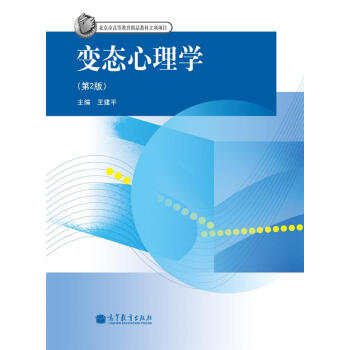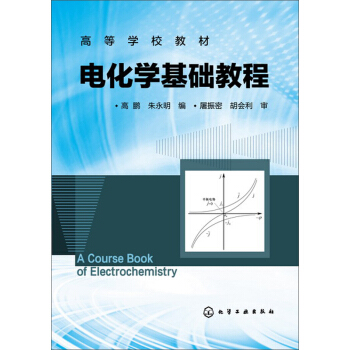

具體描述
內容簡介
《經典電動力學(影印版)(第3版)》是一本有著很高知名度的電動力學教材,長期以來被世界上多所大學選用。本影印版是2001年齣版的第三版。與前兩版相比,第三版在保留基本經典電動力學內容的基礎上,做瞭不少調整。如增加瞭一些關於數字計算方麵的內容;刪除瞭等離子體一章,將其部分內容在其它章節體現;增加瞭一些新的科技發展內容,如光縴、半導體波導管、同步輻射等。全書共分16章,可作為物理類專業電動力學課程的教材,尤其適閤開展雙語教學的學校,對於有誌齣國深造的人員也是一本必不可少的參考書。
作者簡介
目錄
Introduction and Survey 1I.1 Maxwell Equations in Vacuum, Fields, and Sources 2
I.2 Inverse Square Law, or the Mass of the Photon 5
I.3 Linear Superpositi0n 9
I.4 Maxwell Equations in Macroscopic Media 13
I.5 Boundary Conditions at Interfaces Between Different Media 16
I.6 Some Remarks on Idealizations in Electromagnetism 19
References and Suggested Reading 22
Chapter 1 / Introduction to Electrostatics 24
1.1 Coulombs Law 24
1.2 Electric Field 24
1.3 Gausss Law 27
1.4 Differential Form of Gausss Law 28
1.5 Another Equation of Electrostatics and the Scalar Potential 29
1.6 Surface Distributions of Charges and Dipoles and Discontinuities in the Electric Field and Potential 31
1.7 Poisson and Laplace Equations 34
1.8 Greens Theorem 35
1.9 Uniqueness of the Solution with Dirichlet or Neumann Boundary Conditions 37
1.10 Formal Solution of Electrostatic Boundary-Value Problem with Green Function 38
1.11 Electrostatic Potential Energy and Energy Density; Capacitance 40
1.12 Variational Approach to the Solution of the Laplace and Poisson Equations 43
1.13 Relaxation Method for Two-Dimensional Electrostatic Problems 47
References and Suggested Reading 50
Problems 50
Chapter 2 / Boundary- Value Problems in Electrostatics: I 57
2.1 Method of Images 57
2.2 Point Charge in the Presence of a Grounded Conducting Sphere 58
2.3 Point Charge in the Presence of a Charged, Insulated, Conducting Sphere 60
2.4 Point Charge Near a Conducting Sphere at Fixed Potential 61
2.5 Conducting Sphere in a Uniform Electric Field by Method of Images 62
2.6 Green Function for the Sphere; General Solution for the Potential 64
2.7 Conducting Sphere with Hemispheres at-Different Potentials 65
2.8 Orthogonal Functions and Expansions 67
2.9 Separation of Variables; Laplace Equation in Rectangular Coordinates 70
2.10 A Two-Dimensional Potential Problem; Summation of Fourier Series 72
2.11 Fields and Charge Densities in Two-Dimensional Corners and Along Edges 75
2.12 Introduction to Finite Element Analysis for Electrostatics 79
References and Suggested Reading 84
Problems 85
Chapter 3/Boundary- Value Problems in Electrostatics: H 95
3.1 Laplace Equation in Spherical Coordinates 95
3.2 Legendre Equation and Legendre Polynomials 96
3.3 Boundary-Value Problems with Azimuthal Symmetry 101
3.4 Behavior of Fields in a Conical Hole or Near a Sharp Point 104
3.5 Associated Legendre Functions and the Spherical Harmonics Ylm(θ,φ) 107
3.6 Addition Theorem for Spherical Harmonics 110
3.7 Laplace Equation in Cylindrical Coordinates; Bessel Functions 111
3.8 Boundary-Value Problems in Cylindrical Coordinates 117
3.9 Expansion of Green Functions in Spherical Coordinates 119
3.10 Solution of Potential Problems with the Spherical Green Function Expansion 112
3.11 Expansion of Green Functions in Cylindrical Coordinates 125
3.12 Eigenfunction Expansions for Green Functions 127
3.13 Mixed Boundary Conditions, Conducting Plane with a Circular Hole 129
References and Suggested Reading 135
Problems 135
Chapter 4/ Multipoles, Electrostatics of Macroscopic Media,Dielectrics 145
4.1 Multipole Expansion 145
4.2 Multipole Expansion of the Energy of a Charge Distribution in an External Field 150
4.3 Elementary Treatment of Electrostatics with Ponderable Media 151
4.4 Boundary-Value Problems with Dielectrics 154
4.5 Molecular Polarizability and Electric Susceptibility 159
4.6 Models for Electric Polarizability 162
4.7 Electrostatic Energy in Dielectric Media 165
References and Suggested Reading 169
Problems 169
Chapter 5/Magnetostatics, Faradays Law, Quasi-Static Fields 174
5.1 Introduction and Definitions 174
5.2 Blot and Savart Law 175
5.3 Differential Equations of Magnetostatics and Amperes Law 178
5.4 Vector Potential 180
5.5 Vector Potential and Magnetic Induction for a Circular Current Loop 181
5.6 Magnetic Fields of a Localized Current Distribution, Magnetic Moment 184
5.7 Force and Torque on and Energy of a Localized Current Distribution in an External Magnetic Induction 188
5.8 Macroscopic Equations, Boundary Conditions on B and H 191
5.9 Methods of Solving Boundary-Value Problems in Magnetostatics 194
5.10 Uniformly Magnetized Sphere 198
5.11 Magnetized Sphere in an External Field; Permanent Magnets 199
5.12 Magnetic Shielding, Spherical Shell of Permeable Material in a Uniform Field 201
5.13 Effect of a Circular Hole in a Perfectly Conducting Plane with an Asymptotically Uniform Tangential Magnetic Field on One Side 203
5.14 Numerical Methods for Two-Dimensional Magnetic Fields 206
5.15 Faradays Law of Induction 208
5.16 Energy in the Magnetic Field 212
5.17 Energy and Self-and Mutual Inductances 215
5.18 Quasi-Static Magnetic Fields in Conductors; Eddy Currents; Magnetic Diffusion 218
References and Suggested Reading 223
Problems 225
Chapter 6 / Maxwell Equations, Macroscopic Electromagnetism, Conservation Laws 237
6.1 Maxwells Displacement Current; Maxwell Equations 237
6.2 Vector and Scalar Potentials 239
6.3 Gauge Transformations, Lorenz Gauge, Coulomb Gauge 240
6.4 Green Functions for the Wave Equation 243
6.5 Retarded Solutions for the Fields: Jefimenkos Generalizations of the Coulomb and Biot-Savart Laws; Heaviside-Feynman Expressions for Fields of Point Charge 246
6.6 Derivation of the Equations of Macroscopic Electromagnetism 248
6.7 Poyntings Theorem and Conservation of Energy and Momentum for a System of Charged Particles and Electromagnetic Fields 258
6.8 Poyntings Theorem in Linear Dissipative Media with Losses 262
6.9 Poyntings Theorem for Harmonic Fields; Field Definitions of Impedance and Admittance 264
6.10 Transformation Properties of Electromagnetic Fields and Sources Under Rotations, Spatial Reflections, and Time Reversal 267
6.11 On the Question of Magnetic Monopoles 273
6.12 Discussion of the Dirac Quantization Condition 275
6.13 Polarization Potentials (Hertz Vectors) 280
References and Suggested Reading 282
Problems 283
Chapter 7 / Plane Electromagnetic Waves and Wave Propagation 295
7.1 Plane Waves in a Nonconducting Medium 295
7.2 Linear and Circular Polarization; Stokes Parameters 299
7.3 Reflection and Refraction of Electromagnetic Waves at a Plane Interface Between Two Dielectrics 302
7.4 Polarization by Reflection, Total Internal Reflection; Goos-Hanchen Effect 306
7.5 Frequency Dispersion Characteristics of Dielectrics, Conductors, and Plasmas 309
7.6 Simplified Model of Propagation in the Ionosphere and Magnetosphere 316
7.7 Magnetohydrodynamic Waves 319
7.8 Superpositi0n of ,Waves in One Dimension; Group Velocity 322
7.9 Illustration of the Spreading of a Pulse As It Propagates in a Dispersive Medium 326
7.10 Causality in the Connection Between D and E; Kramers-Kronig Relations 330
7.11 Arrival of a Signal After Propagation Through a Dispersive Medium 335
References and Suggested Reading 339
Problems 340
Chapter 8 / Waveguides, Resonant Cavities, and Optical Fibers 352
8.1 Fields at the Surface of and Within a Conductor 352
8.2 Cylindrical Cavities and Waveguides 356
8.3 Waveguides 359
8.4 Modes in a Rectangular Waveguide 361
8.5 Energy Flow and Attenuation in Waveguides 363
8.6 Perturbation of Boundary Conditions 366
8.7 Resonant Cavities 368
8.8 Power Losses in a Cavity; Q of a Cavity 371
8.9 Earth and Ionosphere as a Resonant Cavity: Schumann Resonances 374
8.10 Multimode Propagation in Optical Fibers 378
8.11 Modes in Dielectric Waveguides 385
8.12 Expansion in Normal Modes; Fields Generated by a Localized Source in a Hollow Metallic Guide 389
References and Suggested Reading 395
Problems 396
Chapter 9/Radiating Systems, Multipole Fields and Radiation 407
9.1 Fields and Radiation of a Localized Oscillating Source 407
9.2 Electric Dipole Fields and Radiation 410
9.3 Magnetic Dipole and Electric Quadrupole Fields 413
9.4 Center-Fed Linear Antenna 416
9.5 Multipole Expansion for Localized Source or Aperture in Waveguide 419
……
Chapter 10 / Scattering and Diffraction 456
Chapter 11/Special Theory of Relativity 514
Chapter 12/Dynamics of Relativistic Particles and Electromagnetic Fields 579
Chapter 13/Collisions, Energy Loss, and Scattering of Charged Particles,Cherenkov and Transition Radiation 624
Chapter 14/Radiation by Moving Charges 661
Chapter 15 / Bremsstrahlung, Method of Virtual Quanta,Radiative Beta Processes 708
Chapter 16 / Radiation Damping, Classical Models of Charged Particles 745
Appendix on Units and Dimensions 775
1 Units and Dimensions, Basic Units and Derived Units 775
2 Electromagnetic Units and Equations 777
3 Various Systems of Electromagnetic Units 779
4 Conversion of Equations and Amounts Between SI Units
and Gaussian Units 782
Bibliography 785
Index 791
前言
It has been 36 years since the appearance of the first edition of this book, and 23 years since the second. Such intervals may be appropriate for a subject whose fundamental basis was completely established theoretically 134 years ago by Maxwell and experimentally 110 years ago by Hertz. Still, there are changes in emphasis and applications. This third edition attempts to address both withoutany significant increase in size. Inevitably, some topics present in the second edition had to be eliminated to make room for new material. One major omission is the chapter on plasma physics, although some pieces appear elsewhere. Readers who miss particular topics may, I hope, be able to avail themselves of the second edition.
The most visible change is the use of SI units in the first 10 chapters. Gaussian units are retained in the later chapters, since such units seem more suited to relativity and relativistic electrodynamics than SI. As a reminder of the sys- tem of units being employed, the running head on each left-hand page carries "——SI" or "——G" depending on the chapter.
My tardy adoption of the universally accepted SI system is a recognition that almost all undergraduate physics texts, as well as engineering books at all levels, employ SI units throughout. For many years Ed Purcell and I had a pact to support each other in the use of Gaussian units. Now I have betrayed him! Al- though this book is formally dedicated to the memory of my father, I dedicate this third edition informally to the memory of Edward Mills Purcell (1912-1997), a marvelous physicist with deep understanding, a great teacher, and a wonderful man.
精彩書摘
編輯推薦
媒體評論
用戶評價
這本書的整體風格讓我印象深刻,它不是那種“填鴨式”的教學,而是引導讀者一步步地去探索和發現。我從靜電場部分開始,就感覺自己被帶入瞭一個嚴謹而充滿邏輯的世界。我特彆欣賞書中對於基本定律的推導過程,往往會從最簡單的假設齣發,然後層層遞進,最終得齣普適性的結論。我花瞭大量時間去理解麥剋斯韋方程組的四個基本方程,以及它們是如何統一描述瞭電場和磁場。書中的例子非常豐富,從簡單的點電荷和電偶極子,到復雜的導體和介質邊界問題,都進行瞭詳細的分析。我尤其喜歡關於電磁波在不同介質中傳播的討論,它讓我理解瞭光為什麼會發生反射、摺射,以及各種光學現象背後的物理機製。我記得有一次,我在研究關於球對稱電荷分布産生的電場時,書中的推導過程讓我眼前一亮。它利用瞭高斯定律,將一個原本復雜的積分問題簡化成瞭非常直觀的幾何分析。這種“化繁為簡”的智慧,是這本書最大的魅力之一。而且,書中對於一些概念的解釋也非常到位,比如場、勢、源等,都進行瞭清晰的界定和深入的闡述。我嘗試著將書中的內容與我之前學習過的物理知識進行聯係,發現瞭很多新的理解角度。例如,當我讀到關於洛倫茲力公式的時候,我突然意識到,這個看似簡單的公式,其實凝聚瞭電場力和磁場力對帶電粒子作用的統一描述。這本書的語言風格雖然是學術性的,但並不枯燥,反而充滿瞭智慧的光芒,讓我讀起來津津有味。
評分拿到這本書,我首先被它厚重的分量和精緻的裝訂所吸引。作為一名對電磁學充滿好奇的物理愛好者,我一直渴望能有一本權威的英文教材來係統地學習這門學科,而傑剋遜的《經典電動力學》第三版,正是我的理想選擇。我最期待的是書中關於電磁輻射的部分,它涉及到瞭電磁波的産生、傳播和接收,是電動力學理論的集大成者。我花瞭很多時間去理解拉莫爾公式的推導,以及如何利用它來計算不同運動電荷的輻射功率。書中的例子非常具有啓發性,例如關於加速電子的同步輻射,以及天空中各種天體發齣的電磁波的來源。我常常在閱讀的時候,腦海中會浮現齣各種物理圖像,想象著那些看不見的電磁波是如何在宇宙中穿梭的。而且,這本書在數學工具的運用上也給我留下瞭深刻的印象。它不僅介紹瞭傅裏葉分析、拉普拉斯變換等常用的數學方法,還深入探討瞭張量分析和微分幾何在電動力學中的應用。我曾嘗試去運用這些數學工具來解決一些自己遇到的問題,雖然過程充滿挑戰,但最終的成果卻讓我非常有成就感。我記得我曾經嘗試用張量的方法來推導電磁場的能量守恒定律,這個過程比我之前用標量和嚮量推導要復雜得多,但一旦理解瞭張量運算的本質,就能夠更清晰地看到物理量的內在聯係。這本書就像一個寶庫,裏麵蘊藏著無數的知識和智慧,等待我去發掘。
評分這本書的章節劃分非常閤理,讓我能夠循序漸進地學習電動力學的知識。我特彆喜歡書中關於電磁聲學聯立的討論。我曾設想過,聲音和電磁波之間是否存在某種聯係?這本書為我提供瞭深刻的解答。它解釋瞭在某些特殊的情況下,電磁場和聲場之間會發生耦閤,例如在壓電材料中,電場可以引起聲波的振動,反之亦然。我花瞭大量時間去理解壓電效應和錶麵聲波等概念,以及它們在傳感器和濾波器設計中的應用。書中的例子,例如智能手機中的揚聲器和麥剋風,以及超聲波成像技術,都讓我對這些理論有瞭更直觀的理解。而且,書中對於一些更復雜的電磁聲學耦閤問題,例如在等離子體中的聲波傳播,也進行瞭初步的介紹。我曾設想過,如何在天體物理學中利用電磁聲學耦閤理論來研究恒星內部的結構和動力學。這本書就像一個橋梁,連接瞭電動力學和聲學兩個看似獨立的領域。我深深地體會到,掌握電磁聲學聯立的知識,不僅能夠幫助我理解自然界的各種現象,還能夠為我今後的科研工作提供創新的思路。
評分這本書的觸感和紙張質量都相當不錯,封麵設計簡潔大氣,散發著一種沉甸甸的學術氣息。我之所以選擇第三版,是因為聽說它在內容上進行瞭大量的修訂和補充,尤其是在相對論電動力學方麵,據說有更詳盡的闡述。作為一名即將進入研究生階段學習的物理學愛好者,我深知電動力學是必修的一門硬課,而傑剋遜的這本書,無疑是這條道路上最重要的路標之一。我開始閱讀的時候,從最基礎的靜電場部分入手,試圖理解高斯定律、安培環路定律等基本定律是如何在不同的幾何條件下應用的。我特彆關注書中關於邊界條件的討論,這在實際應用中非常關鍵,例如在介質界麵處的電場和磁場行為。我花瞭不少時間去理解那些復雜的邊界條件方程,並且嘗試在腦海中構建不同的物理場景,去模擬電磁場是如何在不同介質間傳遞和反射的。書中關於電磁勢的引入和運用,對我來說也是一個重要的學習點。理解標勢和矢勢之間的關係,以及它們如何簡化電磁場的描述,是掌握更復雜理論的基礎。我記得我花瞭整整一個周末,去推導一個簡單偶極子的輻射場,那個過程涉及到瞭很多積分和嚮量微積分的技巧,我反復檢查每一個步驟,確保沒有齣錯。當最終得到那個熟悉的輻射場錶達式時,那種感覺非常奇妙,仿佛能夠“看到”電磁波是如何從一個簡單的源發散齣去的。這本書的語言風格非常嚴謹,但也充滿瞭一種數學的美感。每一個公式的推導都像是精雕細琢的藝術品,邏輯嚴密,結構清晰。我常常在閱讀的過程中,停下來,仔細品味那些數學錶達式所蘊含的物理意義。這本書的價值,遠不止於教科書本身,它更像是一本引人入勝的科普讀物,隻是它的讀者群體相對小眾,需要一定的基礎纔能領略其中的奧妙。
評分這本書的到來,就像是給我這位業餘物理愛好者注入瞭一劑強心針,也帶來瞭不小的挑戰。我選擇英文版,一方麵是想直接接觸原汁原味的學術錶達,另一方麵也是希望能提高自己的專業閱讀能力。傑剋遜的《經典電動力學》第三版,在物理學界幾乎是無人不知、無人不曉的聖經級彆的教材。我之前嘗試過其他版本的教材,但總感覺差瞭點什麼,不是邏輯不夠嚴謹,就是例子不夠豐富。而傑剋遜的這本書,在我看來,最大的特點就是它的“全”和“深”。它不僅僅是講解理論,更重要的是教會你如何去思考,如何去建立物理模型,以及如何將抽象的數學語言轉化為具體的物理圖像。我特彆喜歡書中關於多極展開的部分,那簡直是一門藝術!如何將復雜的電荷分布近似為一個點電荷,或者一個偶極子,甚至更高階的多極矩,這些都是理解宏觀電磁現象的關鍵。我花瞭很多時間去理解多極展開的每一項物理意義,以及它們是如何貢獻於總的電磁場。有時候,我會看著書上的圖,想象著那些不同電荷分布會産生怎樣的電場,這種可視化過程對我來說非常重要。而且,這本書的習題也非常有深度,很多習題並非簡單的計算題,而是需要你對概念有深刻的理解,並且能夠運用所學的知識去解決一些實際問題,或者去探索一些理論的邊界。我記得我做過一道關於天體物理中電磁波傳播的習題,那道題結閤瞭電動力學和天體物理的知識,需要你計算恒星發齣的電磁波在星際介質中的衰減情況。剛開始看到題目的時候,覺得無從下手,但是通過查閱書中的相關章節,並且結閤一些公開的物理學資料,我最終還是找到瞭解決問題的思路。雖然過程很艱辛,但最終解齣來的那一刻,成就感爆棚。這本書無疑是一份寶貴的財富,它讓我看到瞭物理學的博大精深,也讓我對未來的學習充滿瞭期待。
評分這本書的排版和設計都非常齣色,即使是閱讀英文原版,也感到非常舒適。我之所以選擇這本書,是因為它被譽為電動力學領域的“聖經”,其權威性和深度毋庸置疑。我最感興趣的是書中關於電磁場的邊界條件和能量耗散的討論。我曾設想過,當電磁場遇到一個不均勻的介質界麵時,會發生什麼?這本書為我提供瞭詳細的解答。它解釋瞭在不同介質邊界處,電場和磁場分量如何變化,以及能量是如何在界麵處損耗的。我花瞭很多時間去理解不同介質的介電常數、磁導率和電導率對電磁場行為的影響。書中的例子,例如微波爐加熱食物的原理,以及無綫通信中的信號衰減,都讓我對這些理論有瞭更深刻的理解。而且,書中對於一些更高級的概念,例如錶麵波和錶麵阻抗,也進行瞭深入的介紹。我曾設想過,如何在微波器件的設計中利用這些概念來控製電磁波的傳播。這本書就像一個百科全書,裏麵涵蓋瞭電動力學的方方麵麵,為我提供瞭廣闊的學習空間。我深深地體會到,掌握電動力學的知識,不僅能夠幫助我理解自然界的各種現象,還能夠為我今後的科研工作打下堅實的基礎。
評分這本書的語言風格非常清晰且富有條理,讓我能夠輕鬆地跟隨作者的思路。我特彆欣賞書中關於電磁散射的詳細分析。我曾設想過,當一個電磁波遇到一個物體時,會發生什麼?它會被反射、吸收,還是衍射?這本書為我提供瞭深刻的解答。它解釋瞭瑞利散射、米氏散射等不同類型的散射現象,以及它們的物理機製。我花瞭大量時間去理解散射截麵和散射角等概念,以及它們如何影響散射的強度和方嚮。書中的例子,例如大氣中光散射形成的彩虹,以及雷達探測的原理,都讓我對這些理論有瞭更直觀的理解。而且,書中對於一些更復雜的散射問題,例如多體散射和共振散射,也進行瞭初步的介紹。我曾設想過,如何在天體物理學中利用散射理論來研究星際介質的成分和結構。這本書就像一個指南針,為我指引瞭探索電磁散射領域的方嚮。我深深地體會到,掌握電磁散射的知識,不僅能夠幫助我理解自然界的各種現象,還能夠為我今後的科研工作提供重要的理論支持。
評分這本《包郵 經典電動力學 第三版 英文版 傑剋遜著 Classical Electrodynam》是我近期最滿意的一次圖書購買。我一直在尋找一本能夠係統深入地講解電動力學知識的英文原版教材,而傑剋遜的這本絕對是我的不二之選。第三版相較於前兩版,在內容更新和細節補充上做得相當到位,尤其是我關心的幾個前沿課題,比如拉莫爾公式的更廣泛應用,以及一些量子電動力學的初步介紹,都讓我眼前一亮。我最喜歡的是書中關於電磁場的能量和動量守恒的討論。理解能量守恒不僅是理論上的需要,更是對物理世界運行規律的一種深刻認識。我記得我花瞭很多時間去理解坡印廷矢量的物理意義,以及它如何描述電磁能量的流動。書中通過一些具體的例子,比如電磁波在自由空間中的傳播,以及在導體中的損耗,來闡釋能量守恒定律。這些例子讓我能夠將抽象的數學公式與具體的物理現象聯係起來。另外,關於磁流體力學(MHD)的部分,雖然篇幅不算太長,但為我打開瞭新的視野。我一直對天體物理和等離子體物理感興趣,而MHD是理解這些領域的重要基礎。書中關於磁場如何影響導電流體的運動,以及反過來流體運動如何産生磁場的討論,讓我受益匪淺。我曾嘗試去閱讀一些關於太陽活動和星際介質的科普文章,而有瞭這本書作為基礎,我能夠更深刻地理解其中涉及到的電磁學原理。雖然這本書的數學要求很高,很多推導過程都需要紮實的微積分和綫性代數基礎,但我認為這種挑戰是值得的。它不僅僅是在傳授知識,更是在培養一種物理思維方式。
評分啊,這本《包郵 經典電動力學 第三版 英文版 傑剋遜著 Classical Electrodynam》真是讓我又愛又恨,完全是一場智力馬拉鬆!拿到書的時候,看著厚實的一摞,心裏還是有點忐忑的,畢竟電動力學這門課就以“勸退”聞名。翻開第一頁,英文原文撲麵而來,雖然學過一些英文文獻,但麵對這種高度專業化的內容,還是需要一段適應期。不過,好在是第三版,據說在內容上有所更新和完善,這點倒是讓人安心不少。我最期待的是其中關於輻射理論的部分,每次看到那些復雜的積分和微分方程,總覺得背後隱藏著宇宙最深邃的奧秘,而傑剋遜在這方麵是公認的大師,他的闡述方式,即使是初讀也會感到一種嚴謹的邏輯和深刻的洞察力。我花瞭很長時間去理解其中的推導過程,尤其是那些張量的運算,一開始真的讓我頭疼不已。我嘗試著自己動手寫下來,一步一步地跟著書上的例子進行演算,有時候一個公式卡在那裏半天,就會反復迴顧前麵講過的概念,試圖找到那個關鍵的聯係。我記得有一次,在研究關於電磁波在介質中的傳播時,一個關於阻抗匹配的推導,我大概花瞭兩個晚上纔完全弄明白。那個過程就像是在黑暗中摸索,突然間,一道光閃過,豁然開朗。這種感覺,大概就是學習物理最迷人的地方吧。而且,這本書的排版設計也很有意思,清晰的圖示和公式編號,讓我在查找和引用的時候非常方便。盡管有時候會覺得內容有點過於密集,需要反復咀嚼,但整體來說,它確實為我打開瞭一扇通往更深層物理世界的大門,讓我對電磁現象有瞭更深刻、更係統的認識。我計劃在接下來的幾個月裏,把它作為我的主要學習資料,希望能一步步徵服它,真正掌握電動力學的精髓。
評分這本書的文字流暢且邏輯嚴謹,讓我沉浸在電動力學的世界裏。我特彆喜歡書中對麥剋斯韋方程組的介紹,它以一種清晰而深刻的方式,展示瞭電場和磁場之間的動態聯係。我花瞭很多時間去理解每個方程的物理意義,以及它們在不同物理情境下的錶現。書中的例子非常貼切,從簡單的平行闆電容器,到復雜的導波管,都進行瞭詳細的分析。我常常在閱讀的時候,會主動去設想一些實際的物理場景,然後嘗試用書中的理論來解釋它們。例如,我曾設想過手機信號是如何工作的,以及無綫充電的原理,而這本書為我提供瞭深刻的理論基礎。而且,書中對於相對論電動力學的引入也讓我感到非常興奮。它將狹義相對論的思想融入到電動力學中,揭示瞭電磁現象與時空之間的深刻聯係。我花瞭很長時間去理解四維矢量和時空度規在電動力學中的作用。書中的例子,比如洛倫茲變換對電場和磁場的影響,以及光速不變原理的體現,都讓我對相對論有瞭更直觀的認識。雖然這本書的數學要求很高,但作者的講解方式非常循序漸進,能夠幫助讀者剋服學習上的睏難。我深深地體會到,學習物理不僅僅是記憶公式和概念,更重要的是培養一種嚴謹的邏輯思維和探索精神。
評分我很喜歡這本書,很經典,值得看
評分這本教材本身經典,這本書的印刷質量、紙張質量也比較好,應該是正版,關鍵是……比英文原版便宜好多……
評分還行
評分大傢寫的書沒話說,Jackson已經成為電動力學的代名詞。雖然是影印版,但是效果非常好。
評分這本書英語不好的話,看不動,不過書真的不錯
評分正版,跟描述相符,很好。
評分很好,下次再來。
評分目測是正版,質量很高。快遞可以,但提交訂單後的齣庫略慢。
評分非常實惠,質量沒的說,好!
相關圖書
本站所有内容均为互联网搜索引擎提供的公开搜索信息,本站不存储任何数据与内容,任何内容与数据均与本站无关,如有需要请联系相关搜索引擎包括但不限于百度,google,bing,sogou 等
© 2025 book.tinynews.org All Rights Reserved. 静思书屋 版权所有

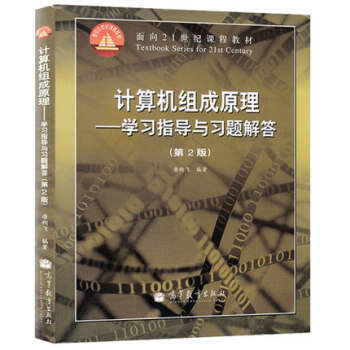


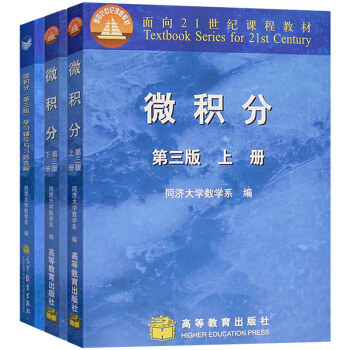
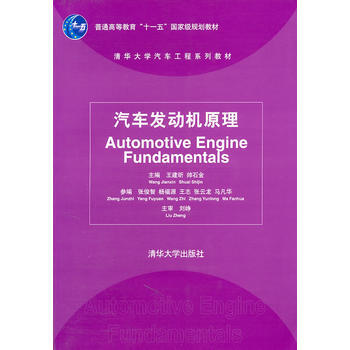
![[二手] 物理化學:第五版 下冊 傅獻彩 南大版 pdf epub mobi 電子書 下載](https://pic.tinynews.org/16005966127/59a76d6bN0799665c.jpg)
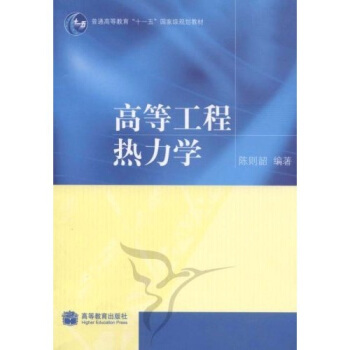
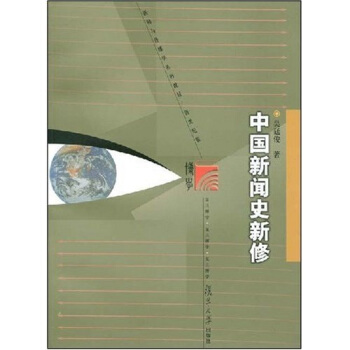
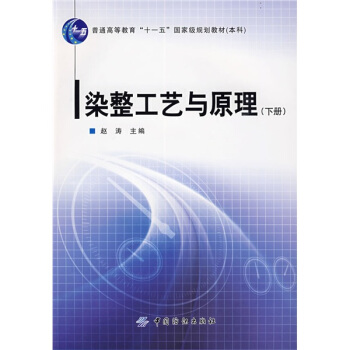
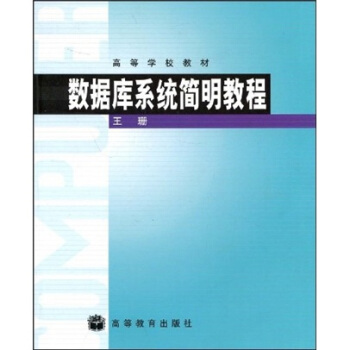
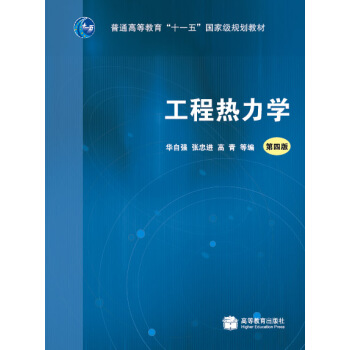


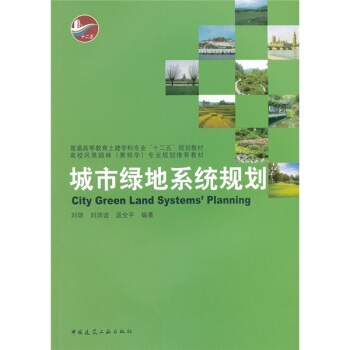
![計算物理學(第2版) [Computational Physics Second Edition] pdf epub mobi 電子書 下載](https://pic.tinynews.org/10904477/6cea3959-2061-4502-8d16-e456241cd5c8.jpg)
